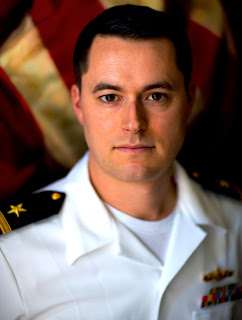Veterans are unique members of American society. I am lucky to have served in the military. I had the opportunity to experience firsthand things most people only read about. From the threat of North Korean nuclear proliferation to tension in the South China Sea to patrols in the Strait of Hormuz, my six years in the Navy left me with skills, experiences and perspectives you cannot find anywhere else.
In exchange for six years as a Naval Officer I received a world class education at no cost. I was challenged in a leadership role at a young age and I grew as a professional. When I began working for the Nuclear Energy Institute (NEI) last January, I was surprised by the number of veterans I found in the industry. From power plants to utility infrastructure to corporate America, I was encouraged to learn that our industry not just prioritizes but actively seeks veterans. The program Troops to Energy Jobs, for example, is an energy industry initiative that provides veterans with a roadmap for entry into highly skilled utility and engineering occupations. It is a success story and an example of a well-coordinated, well-run veteran hiring program.
Despite this, the transition to civilian life and getting a job is still a challenge for many of our veterans. Prior to working at NEI I wrote veterans policy for a 2014 gubernatorial candidate. I spent months researching issues, talking to veterans and trying to determine how best to support and serve these men and women. This experience allowed me to spend time studying the root cause of issues like unemployment.
I believe many Americans do not understand how diverse our veteran population is. I do not mean cultural or socioeconomic diversity. I mean the diverse set of experiences, skills and perspectives our veterans gain while in the military. To many Americans, a veteran is someone who served boots-on-the-ground in Vietnam or Fallujah. In reality, those veterans – who are among the bravest – represent a fraction of the 22 million veterans living in America.
On this Veterans Day, don’t thank a military member for their service; ask them about their experience. My father and I both spent time in the military. He served the military police as an enlisted Army soldier for three years in Germany between the Vietnam War and the Gulf War. I served as a Naval Officer for six years driving warships in the Western Pacific ocean in the post-9/11 era. We are both veterans. But if you get to know either of us, you will quickly find that our experiences were profoundly different. Neither of us spent time under fire, but we both have stories to tell.
American veterans make up 1 percent of our population. So on this Veterans Day, get to know one. Share a meal or a cup of coffee. Listen to the diverse accounts of the mechanics, the cooks, the medics, the logisticians, the intelligence gatherers, the JAGs, the electricians and the gunners. Ask questions about who they are, where they served and what they learned. There are 22 million stories out there waiting to be shared.
 |
| Jon Breed |
Despite this, the transition to civilian life and getting a job is still a challenge for many of our veterans. Prior to working at NEI I wrote veterans policy for a 2014 gubernatorial candidate. I spent months researching issues, talking to veterans and trying to determine how best to support and serve these men and women. This experience allowed me to spend time studying the root cause of issues like unemployment.
I believe many Americans do not understand how diverse our veteran population is. I do not mean cultural or socioeconomic diversity. I mean the diverse set of experiences, skills and perspectives our veterans gain while in the military. To many Americans, a veteran is someone who served boots-on-the-ground in Vietnam or Fallujah. In reality, those veterans – who are among the bravest – represent a fraction of the 22 million veterans living in America.
On this Veterans Day, don’t thank a military member for their service; ask them about their experience. My father and I both spent time in the military. He served the military police as an enlisted Army soldier for three years in Germany between the Vietnam War and the Gulf War. I served as a Naval Officer for six years driving warships in the Western Pacific ocean in the post-9/11 era. We are both veterans. But if you get to know either of us, you will quickly find that our experiences were profoundly different. Neither of us spent time under fire, but we both have stories to tell.
American veterans make up 1 percent of our population. So on this Veterans Day, get to know one. Share a meal or a cup of coffee. Listen to the diverse accounts of the mechanics, the cooks, the medics, the logisticians, the intelligence gatherers, the JAGs, the electricians and the gunners. Ask questions about who they are, where they served and what they learned. There are 22 million stories out there waiting to be shared.
The above guest post is from Jon Breed, manager of supplier advocacy programs at NEI.
Comments